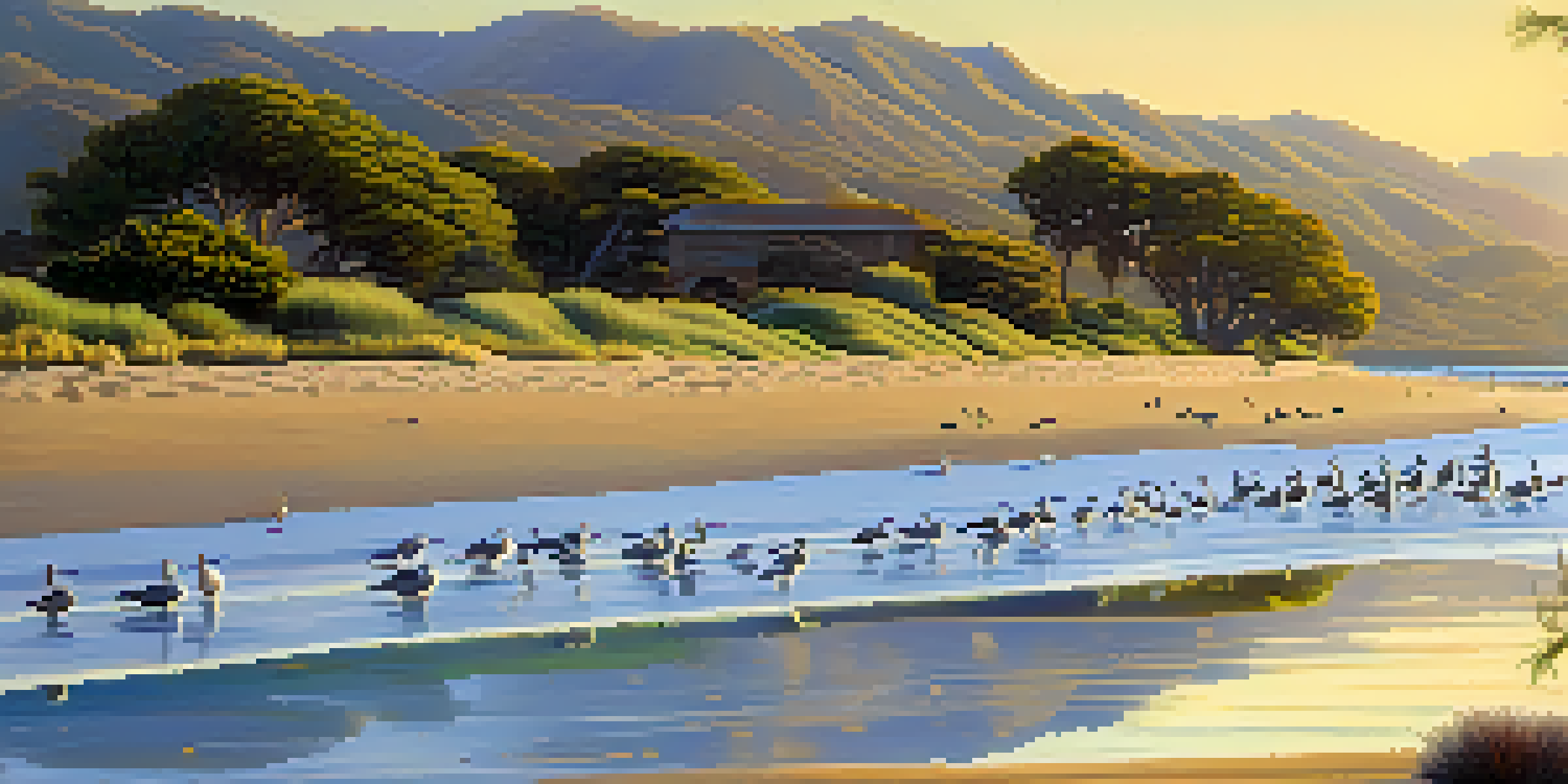How to Prepare for a Wildlife Viewing Trip in Malibu

Understanding the Best Times for Wildlife Viewing
Timing is everything when it comes to wildlife viewing. In Malibu, the best times to observe animals are typically early morning or late afternoon. During these hours, animals are most active and visible, making it easier to spot them in their natural habitats.
In every walk with nature one receives far more than he seeks.
Seasonality also plays a crucial role in wildlife sightings. Different species are more active or visible during certain seasons. For instance, gray whales can often be seen migrating along the coast from December to April, while sea lions are more visible in the warmer months.
By planning your trip around these optimal times and seasons, you can greatly increase your chances of having a memorable wildlife experience. It’s all about being in the right place at the right time!
Choosing the Right Locations for Wildlife Viewing
Malibu is home to stunning landscapes that are perfect for wildlife viewing. Popular spots include the Malibu Lagoon State Beach, where you can often see shorebirds and other coastal wildlife. The nearby Point Mugu State Park also offers numerous trails with breathtaking views and chances to see various animals.

Another great option is the Santa Monica Mountains, which provide a diverse range of habitats. Here, you might spot deer, coyotes, or even the elusive mountain lion if you're lucky. Researching these locations ahead of time will help you choose the best spots to increase your chances of sightings.
Best Times for Wildlife Viewing
Early mornings and late afternoons are optimal for observing wildlife in Malibu, as animals are most active during these times.
Remember, each location has its unique charm and wildlife, so consider visiting multiple sites during your trip. This way, you can enjoy a variety of experiences in Malibu’s beautiful natural surroundings.
Essential Gear and Equipment to Bring
Packing the right gear is essential for a successful wildlife viewing trip. Start with a good pair of binoculars to help you observe animals from a distance without disturbing them. A camera with a zoom lens can also capture those special moments you'll want to remember.
The earth has music for those who listen.
Comfortable clothing and sturdy shoes are a must, especially if you plan to hike. Weather in Malibu can change quickly, so layering is key. Don't forget a hat and sunscreen to protect yourself from the sun during your outdoor adventures.
Lastly, bringing a field guide can enhance your experience. It will help you identify different species and learn more about their behaviors, making your trip not just enjoyable but educational.
Practicing Responsible Wildlife Viewing Etiquette
When observing wildlife, it's crucial to practice responsible viewing to protect both the animals and yourself. Always maintain a safe distance from wildlife; approaching too closely can stress them out or put you in danger. Use your binoculars or zoom lens to enjoy the view from afar.
Additionally, avoid feeding wildlife, as it can disrupt their natural foraging behavior and lead to dependency on human food. It's important to remember that these animals are best observed in their natural state.
Responsible Wildlife Viewing Tips
Maintaining a safe distance, avoiding feeding wildlife, and respecting park rules are essential for ethical wildlife observation.
Finally, follow all park rules and regulations. Respecting wildlife and their habitats ensures future generations can enjoy the beauty of nature just as you have.
Staying Safe While Exploring Wildlife Areas
Safety should always be a top priority when exploring wildlife habitats. Familiarize yourself with the area and the types of wildlife you might encounter. For example, knowing how to react if you see a bear or a rattlesnake can make a significant difference in your safety.
It's also wise to let someone know your plans, especially if you're venturing alone or into remote areas. Having a charged phone, a first-aid kit, and plenty of water can also help you stay safe and prepared for any situation.
Lastly, always keep your group together and stay on marked trails. This not only ensures your safety but also protects the environment from unnecessary damage.
Capturing Memories: Photography Tips for Wildlife Viewing
Photographing wildlife can be one of the most rewarding aspects of your trip. To get the best shots, try to maintain a low profile and move slowly to avoid startling the animals. Patience is key; sometimes, simply waiting quietly will yield the best opportunities.
Consider using a telephoto lens for close-up shots while maintaining a safe distance. This way, you can capture the beautiful details of the wildlife without encroaching on their space. Make sure to adjust your camera settings for varying light conditions, especially during early mornings or late afternoons.
Sustainable Wildlife Viewing Practices
Using public transportation and following 'Leave No Trace' principles help preserve Malibu's natural beauty for future generations.
Finally, don’t forget to enjoy the moment! While capturing images is fantastic, the experience of witnessing wildlife in their natural habitat is truly what makes your trip memorable.
Planning for a Sustainable Wildlife Viewing Experience
Sustainability is crucial when it comes to enjoying nature. Consider carpooling or using public transportation to reduce your carbon footprint while visiting Malibu. This not only lessens traffic but also helps preserve the environment you’re there to enjoy.
When you’re out in nature, always practice the 'Leave No Trace' principles. This means taking all your trash with you, respecting wildlife, and sticking to designated paths to minimize the impact on the ecosystem.

By making conscious decisions during your trip, you contribute to the preservation of Malibu’s stunning wildlife and landscapes for future visitors. A little effort goes a long way in ensuring these natural treasures remain intact.